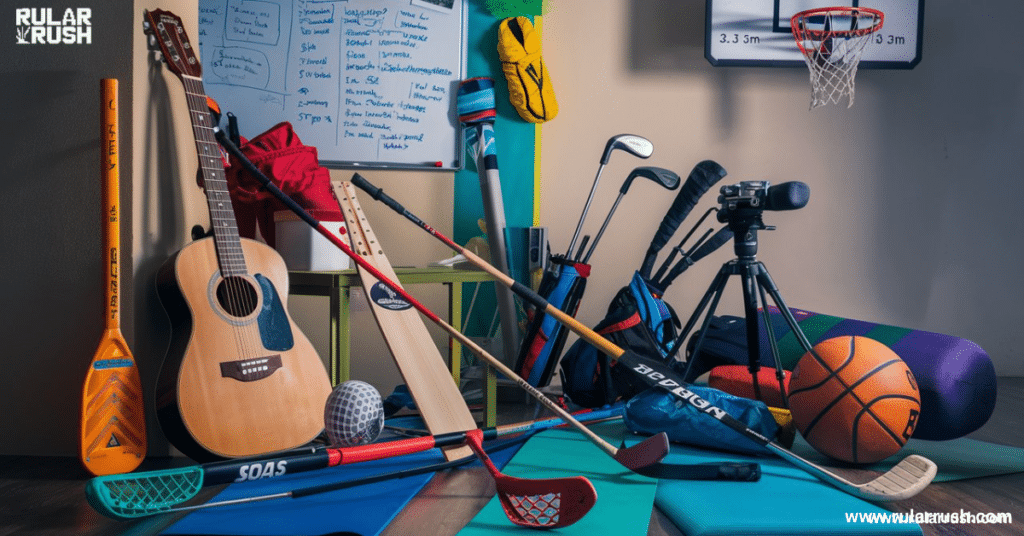
Have you ever wondered, “How long is 1 meter?” This simple question leads us to many familiar objects. From the length of a guitar to a standard yoga mat, things that are 1 meter long are everywhere. Knowing what a meter looks like helps us understand distances in our daily lives.
It makes tasks like decorating, shopping, and playing sports easier. In this article, we will explore nine common items that measure one meter. We’ll also look at the history of the meter and share tips for quick conversions. By the end, you’ll appreciate this important unit and feel more confident estimating lengths!
The Mighty Meter: A Brief History and Why It Matters
Before we jump into our list of common meter-long items, let’s take a quick trip back in time. The meter wasn’t always the go-to measurement it is today. In fact, it’s got quite the colorful past.
The Birth of the Meter
Back in the late 18th century, French scientists were fed up with the hodgepodge of measuring systems across Europe. Imagine trying to trade goods when every region had its own idea of what an “inch” or “foot” meant! They decided to create a universal unit based on nature itself. Their brilliant idea? Define the meter as one ten-millionth of the distance from the North Pole to the Equator.
“The metric system is the tool of the devil! My car gets forty rods to the hogshead, and that’s the way I likes it!” – Grandpa Simpson
While Grandpa Simpson might disagree, the meter has since become the foundation of the metric system used worldwide. Today, it’s defined by the speed of light in a vacuum – talk about high-tech!
The Evolution of the Meter
The journey from concept to universal standard wasn’t smooth sailing. Here’s a quick timeline:
- 1793: France adopts the meter as its official unit of length
- 1875: The Treaty of the Meter is signed, establishing the International Bureau of Weights and Measures
- 1960: The meter is redefined based on the wavelength of krypton-86 radiation
- 1983: Our current definition is established, based on the speed of light
This evolution shows how our understanding of the world and our ability to measure it precisely has grown over time
Also check:https://rularrush.com/things-that-are-3-inches-long/
Why Understanding Meter-Long Objects Matters
Knowing common meter-long items isn’t just trivia fodder. It’s a practical skill that can help you:
- Estimate distances quickly
- Make better decisions when shopping for furniture or home improvements
- Understand sports regulations and equipment specifications
- Improve your spatial awareness
Decoding the Meter: Quick Conversions
Before we dive into our list, let’s arm ourselves with some quick conversion tricks. These will come in handy when you’re trying to visualize a meter in different contexts.
The 3.28 Rule: Meters to Feet
Here’s a nifty trick: 1 meter is approximately 3.28 feet. So, if you’re more comfortable with feet, just multiply the number of meters by 3.28. Easy peasy!
Centimeters Demystified: The Power of 100
This one’s a no-brainer: 1 meter equals exactly 100 centimeters. So, if you’re dealing with centimeters, just move the decimal point two places to the left to get meters.
Inches Unveiled: The 39.37 Connection
For those who think in inches, remember this: 1 meter is about 39.37 inches. It’s not the prettiest number, but it gets the job done.
Here’s a handy conversion table for quick reference:
| Unit | Equivalent to 1 Meter |
|---|---|
| Feet | 3.28084 feet |
| Inches | 39.3701 inches |
| Centimeters | 100 centimeters |
Your Body: A Natural Measuring Tool
Before we dive into our list of meter-long objects, let’s talk about a measuring tool you always have with you: your body!
Average Adult Step Length
For many adults, a single stride (two steps) is close to a meter. This can be incredibly useful for quick estimations. Next time you’re wondering how wide a room is, try pacing it out!
Arm Span: Nature’s Built-in Ruler
Here’s a fun fact: for many people, their arm span (fingertip to fingertip with arms outstretched) is roughly equal to their height. And since the average adult height is around 1.7 meters, your arm span can give you a good sense of what’s longer or shorter than a meter.
Height Comparisons: Who Measures Up?
While we’re on the topic of height, let’s look at some famous figures who measure up (or down) to a meter:
- Peter Dinklage (Tyrion Lannister from Game of Thrones): 1.32 meters
- Danny DeVito: 1.47 meters
- A meter stick: Exactly 1 meter (shocking, we know!)
- Taylor Swift: 1.80 meters
As you can see, a meter is a pretty significant length when it comes to human height!
9 Everyday Items That Measure Up
Now, let’s get to the heart of our discussion: common objects that are about a meter long. These everyday items can serve as handy reference points when you need to estimate a meter in real life.
1. The Classic Yardstick’s Cousin: The Meterstick
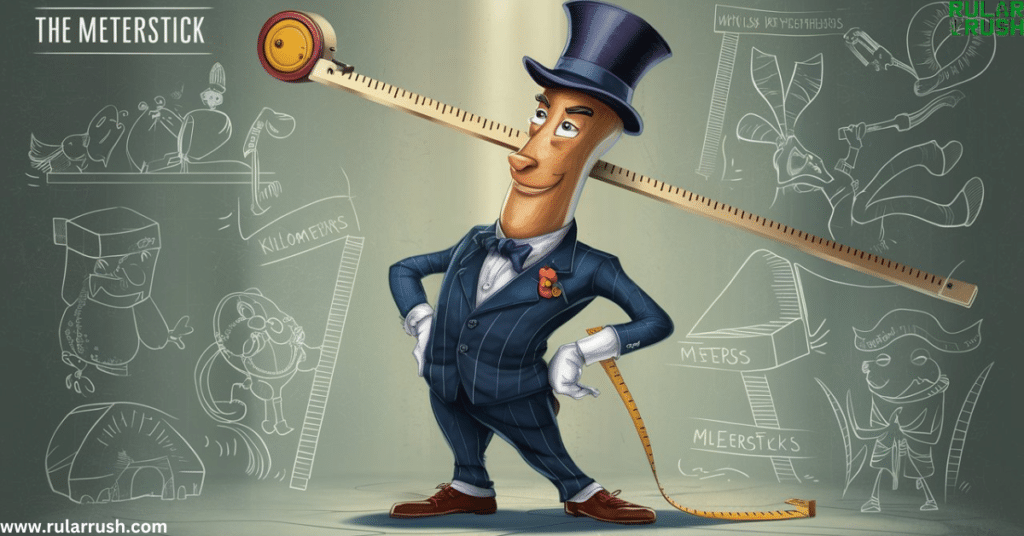
Let’s start with the obvious: the meterstick. It’s the gold standard for measuring a meter, and for good reason.
Why it’s the gold standard:
- Precisely manufactured to be exactly one meter long
- Often includes markings for centimeters and millimeters
- Sturdy and straight, making it ideal for accurate measurements
Fun fact: How accurate are metersticks? High-quality metersticks are usually accurate to within 0.5mm over their entire length. That’s less than the thickness of a credit card!
2. Strumming a Meter: The Guitar
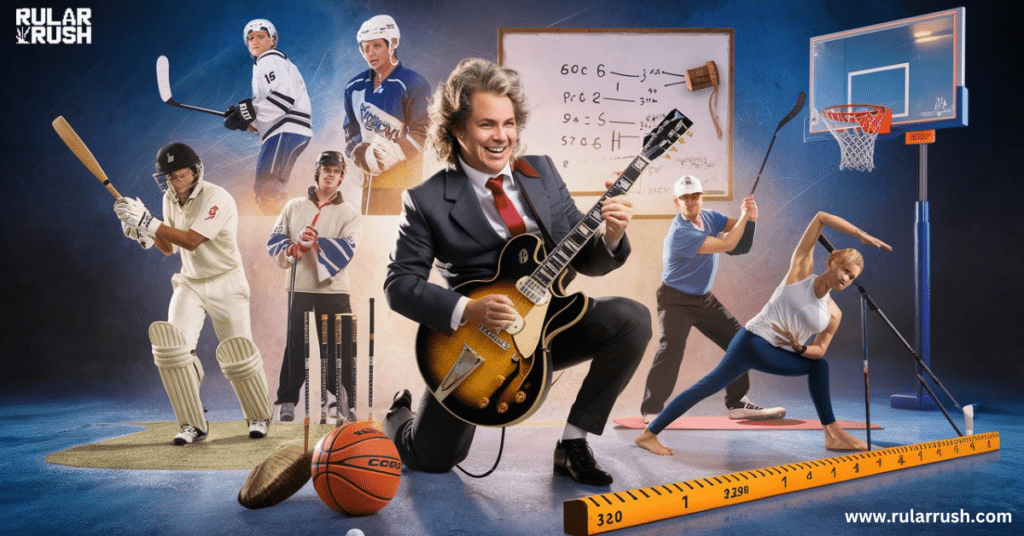
When you’re rocking out to your favorite tunes, you might not realize you’re holding a meter-long instrument.
Types of guitars that hit the mark:
- Most acoustic guitars
- Many electric guitars, especially classic models like the Fender Stratocaster
How length affects sound:
The length of a guitar, particularly its scale length (the distance between the nut and the bridge), significantly impacts its sound. Longer scale lengths generally produce:
- Brighter tone
- More sustain
- Higher string tension
3. Swing for the Fences: Cricket Bats
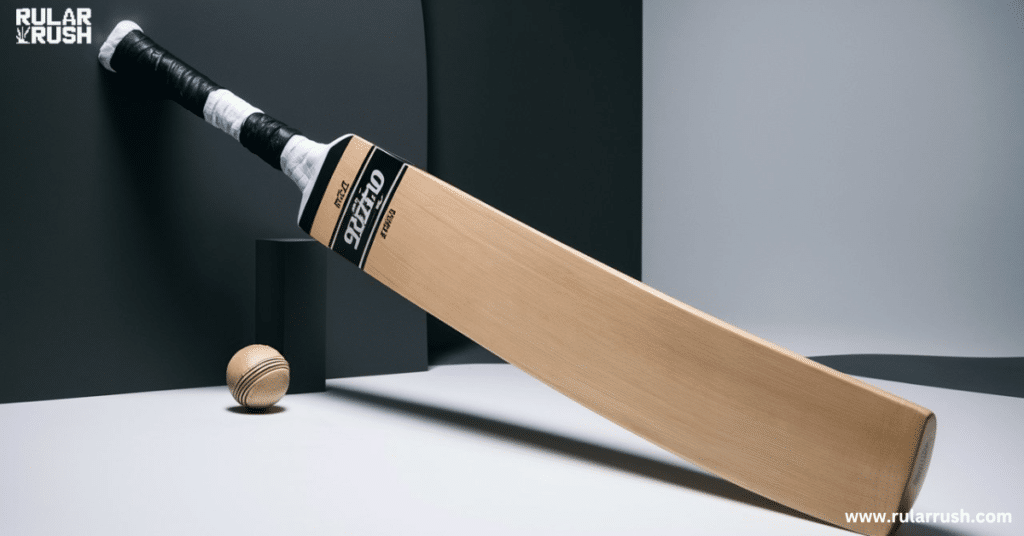
For cricket fans, the meter-long bat is as familiar as the smell of fresh-cut grass on the pitch.
Regulations and variations:
- According to the Laws of Cricket, a bat can be no longer than 38 inches (0.965 meters)
- Most adult bats range from 32 to 34 inches (0.81 to 0.86 meters)
Why length matters in the game:
- Longer bats provide more reach, allowing batsmen to hit balls further away from their body
- However, longer bats are heavier, which can slow down swing speed
- The ideal bat length is a balance between reach and maneuverability
4. Tee Time: Golf Clubs

While not all golf clubs are exactly a meter long, many come pretty close.
Which clubs typically measure up:
- Drivers: Usually the longest club in the bag, often approaching or slightly exceeding 1 meter
- Putters: Generally the shortest, ranging from 32 to 36 inches (0.81 to 0.91 meters)
How club length impacts your swing:
- Longer clubs generally allow for greater swing arc and potentially more distance
- Shorter clubs offer more control and accuracy
- Professional golfers often customize their club lengths to suit their height and swing style
5. Steady as She Goes: Camera Tripods
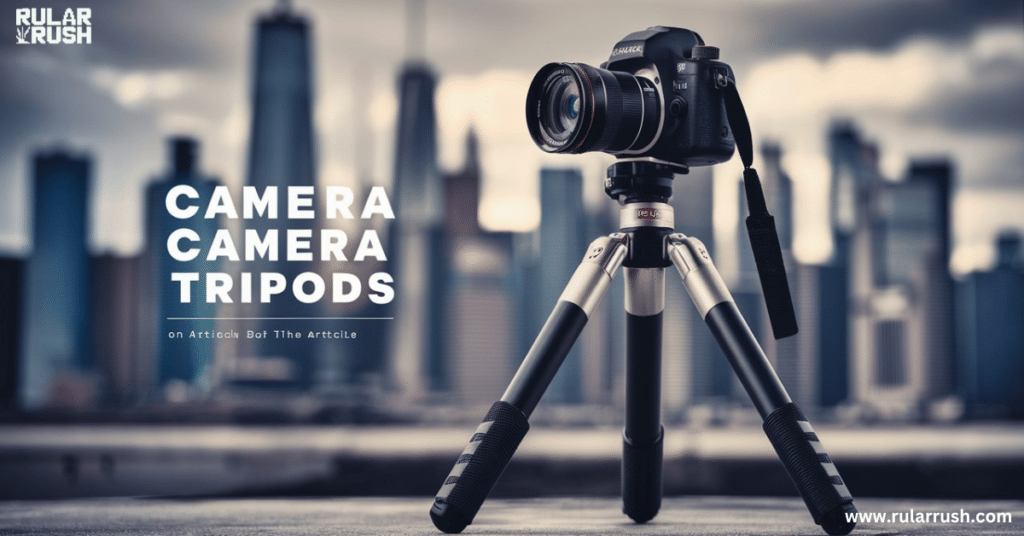
When it comes to photography, stability is key. That’s where the trusty tripod comes in, often measuring right around a meter when fully extended.
Why one meter is the sweet spot:
- Balances stability with portability
- Puts the camera at a comfortable height for most shooters
- Allows for versatile shooting angles
Portability vs. stability trade-offs:
- Shorter tripods are more portable but may not provide enough height for all situations
- Taller tripods offer more flexibility but can be unwieldy to carry
6. Namaste at a Meter: Yoga Mats
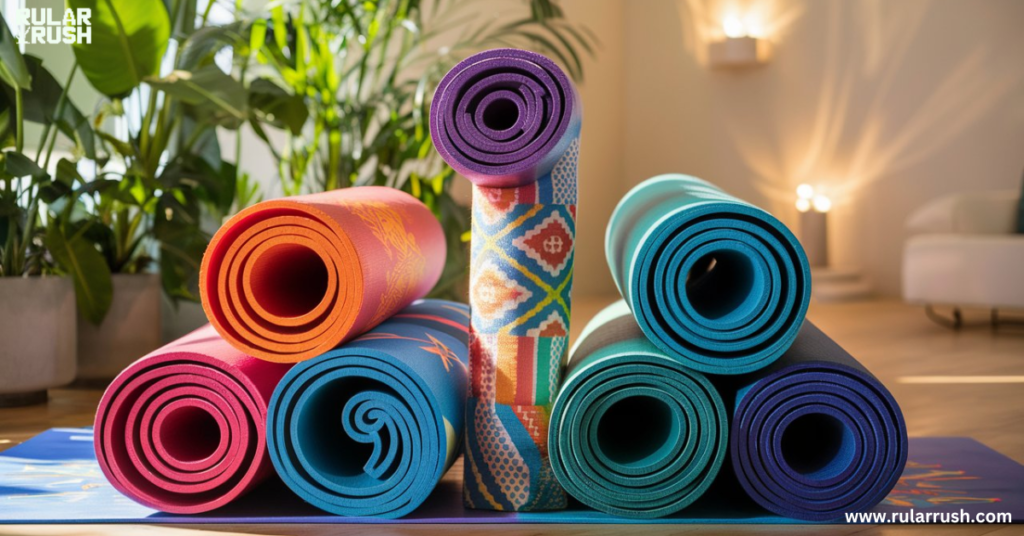
Find your zen on a meter-long yoga mat. These flexible friends are designed to give you just the right amount of space for your practice.
Standard sizes and why they matter:
- Most yoga mats are between 68 and 72 inches long (1.73 to 1.83 meters)
- Width typically ranges from 24 to 26 inches (0.61 to 0.66 meters)
Customizing your practice space:
- Longer mats are great for taller practitioners or those who like more space
- Thicker mats provide more cushioning for joint-intensive poses
- Travel mats are often shorter and thinner for easy portability
7. Slap Shot Central: Ice Hockey Sticks
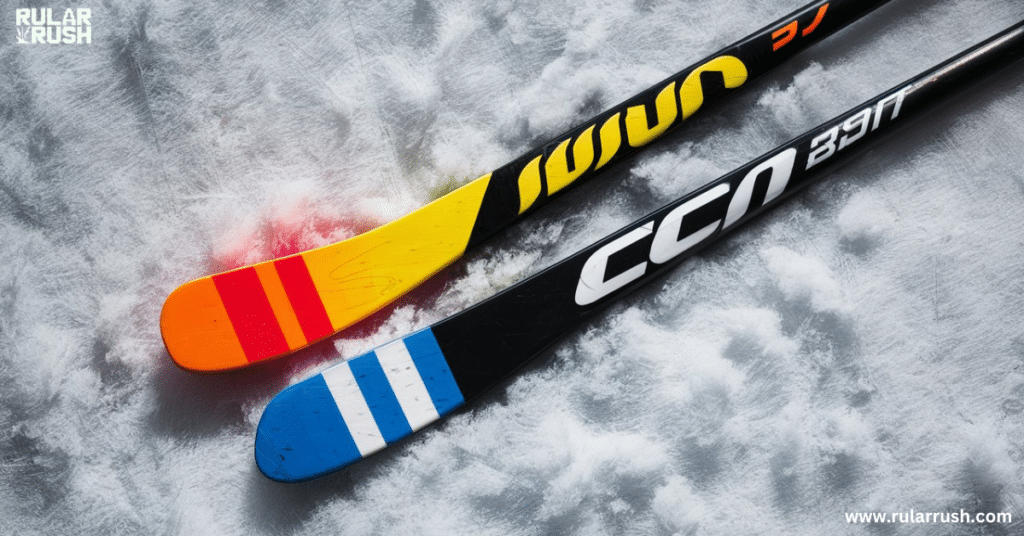
On the ice, precision is everything. That’s why hockey sticks are carefully regulated to ensure fair play.
Regulations across leagues:
- NHL rules state that sticks can be no longer than 63 inches (1.6 meters) from the heel to the end of the shaft
- The blade of the stick adds a few more inches, bringing many sticks close to the 1-meter mark
How stick length affects play style:
- Longer sticks provide more reach, useful for defensive players
- Shorter sticks offer better puck control, favored by many forwards
- Players often customize their stick length based on their height and playing position
8. Write it Out: Whiteboards
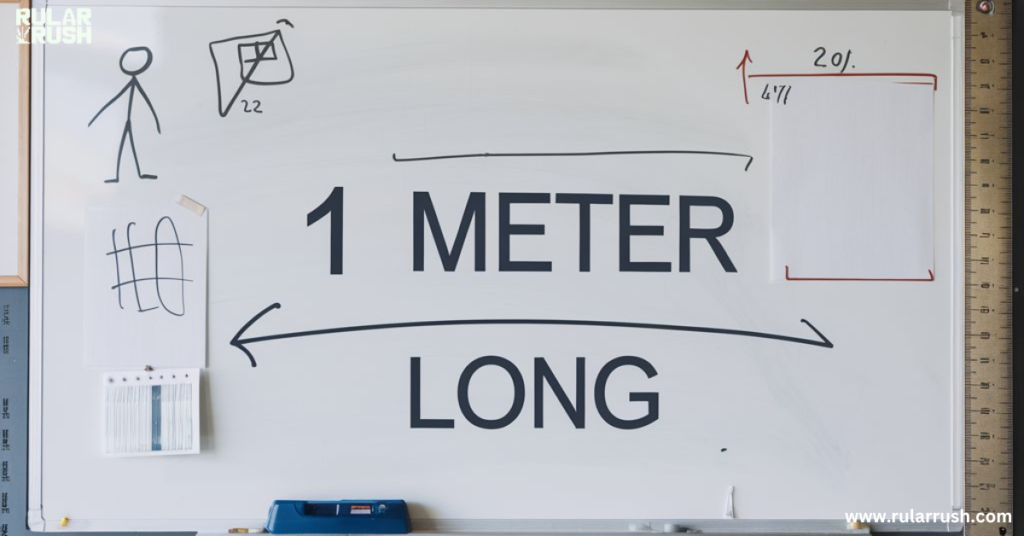
From classrooms to boardrooms, whiteboards are a staple of brainstorming and teaching. Many standard models hover around the 1-meter mark in width or height.
Popular sizes for home and office:
- 3′ x 2′ (91.44 cm x 60.96 cm): A common size that’s just shy of a meter in width
- 4′ x 3′ (121.92 cm x 91.44 cm): Exceeds a meter in width, but close to a meter in height
Maximizing your brainstorming space:
- Larger boards allow for more ideas to be visible at once
- Smaller boards can be more interactive, encouraging people to get up close
- Consider magnetic whiteboards for added versatility with attachable documents and notes
9. Slam Dunk Dimensions: Basketball Hoops

While a basketball hoop itself isn’t a meter long, its diameter is precisely 18 inches (45.72 cm). Two of these side by side would give you almost exactly one meter!
Regulation heights and why they matter:
- The rim is set at 10 feet (3.05 meters) above the ground in standard play
- This height has remained constant since the game’s invention in 1891
How hoop height affects the game:
- The 10-foot height challenges players’ jumping and shooting abilities
- Lower hoops (often used in youth leagues) allow younger players to develop skills more easily
- Some have proposed raising the hoop height in professional leagues to add new challenges to the game
Beyond the Basics: Surprising Meter-Long Items
Now that we’ve covered some common meter-long objects, let’s explore some unexpected items that measure up.
Natural Wonders: Animals and Plants
Nature has its own set of meter-long marvels:
- Giant Pacific Octopus: While their bodies are typically smaller, their tentacles can stretch over a meter long!
- Sunflowers: Some varieties can grow stalks over a meter tall, with flower heads the size of dinner plates.
- Komodo Dragons: These fearsome reptiles often measure around a meter from snout to base of tail.
Household Heroes: Unexpected Meter-Long Tools
Your home might be hiding some meter-long surprises:
- Broom handles: Many standard brooms have handles right around a meter long.
- Curtain rods: Depending on your window size, your curtain rods might be close to a meter.
- Rolling pins: While most are shorter, some specialized rolling pins for large pastries can approach a meter in length.
DIY Meter Measurements: Home Experiments
Ready to put your newfound meter knowledge to the test? Try these fun experiments at home!
Creating Your Own Meter Stick
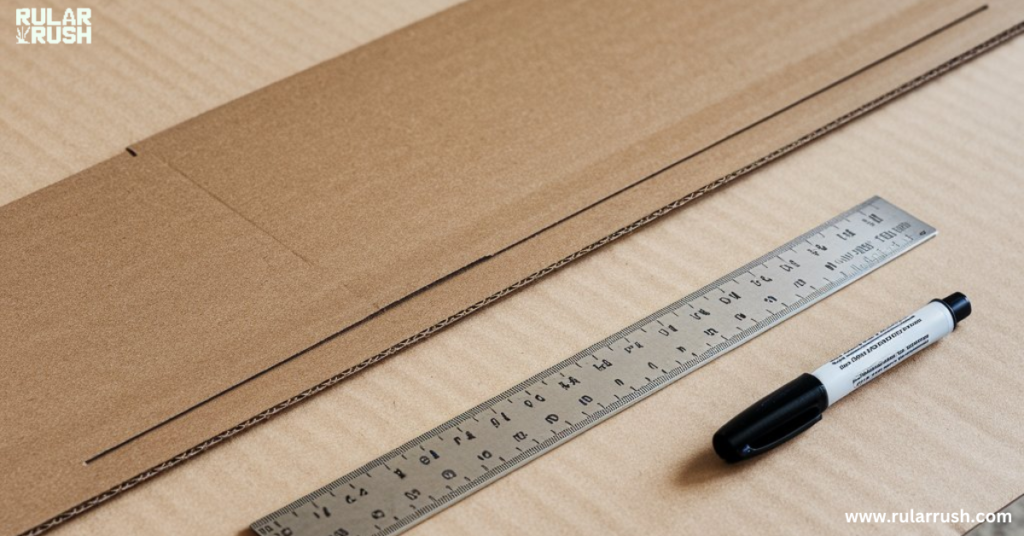
Materials needed:
- A long piece of cardboard or wood
- A ruler
- A marker
Steps:
- Use your ruler to mark off 10 cm increments along your material.
- Continue until you reach 100 cm (1 meter).
- Congratulations! You’ve made your own meter stick.
Estimating Meters in Daily Life
Try these challenges to hone your meter-estimating skills:
- Guess the Room: Before measuring, try to estimate the dimensions of a room in meters. How close were you?
- Meter Scavenger Hunt: Look around your home or office for items you think might be close to a meter. Measure to check your guesses.
- Step Count: Walk heel-to-toe in a straight line, counting your steps. How many does it take you to cover a meter?
Conclusion: Measuring Up in a Metric World
Understanding the meter isn’t just about knowing a bunch of meter-long objects. It’s about developing a sense of space and proportion that can serve you in countless ways.
The Importance of Spatial Awareness
Being able to visualize and estimate distances accurately can help you:
- Make better decisions when arranging furniture or planning home improvements
- Improve your performance in sports and physical activities
- Communicate more effectively about sizes and distances
How Understanding Common Lengths Enhances Daily Life
From shopping for the right size rug to estimating how far you’ve walked, a good grasp of the meter can make your daily interactions with the world smoother and more intuitive.
So the next time you pick up a guitar, swing a cricket bat, or jot down ideas on a whiteboard, take a moment to appreciate the meter-long marvels all around you. Who knows? You might just find yourself measuring up to new challenges with ease!

Elizabeth is an experienced blogger at “Rular Rush,” specializing in delivering precise and insightful content on various measurement topics. With a passion for simplifying complex concepts, she brings clarity and depth to each post, making technical information easy to understand for readers worldwide.






